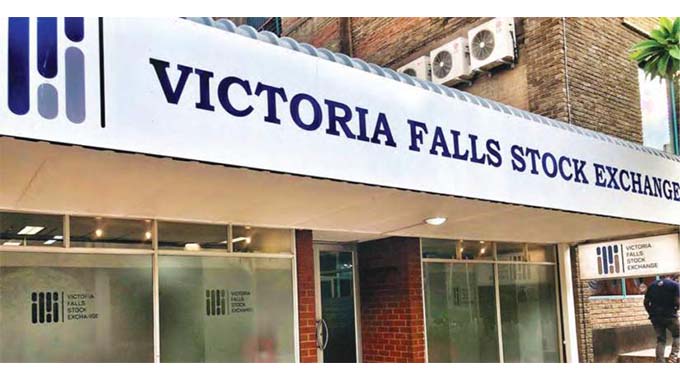Cheers to 5 more years of development, Cde President

Yoliswa Moyo, [email protected]
It was not by chance that what had remained a pipe dream for 87 years became a reality for the people of Gwanda following the revitalisation of Mtshabezi Irrigation Scheme.
It was intentionality by a development-oriented leader and a true desire to see the masses prosper that saw the sleeping giant finally rise to its feet.
Under the stewardship of President Mnangagwa, Government channelled $177 million towards the establishment of the 200-hectare irrigation scheme which was first mooted in 1935, as part of its accelerated efforts to revitalise irrigation schemes to ensure food security.
The funds were used to develop infrastructure such as the installation of water pipes and pumps and the purchase of a centre pivot.
Farmers at the irrigation scheme also received a $20 million loan through the Land Agricultural Development Bank of Zimbabwe (LADBZ) for land preparation and planting.

The investment panned out quite well as the farmers managed to turn the vast tract of arable land into a greenbelt.
Not only have the 157 farmers from Gwanda’s Ward 6 become food secure but they also now have means to generate income and take care of the needs of their families.
Government, working with various partners, has been rehabilitating irrigation schemes that have been lying idle in Matabeleland South province and establishing new ones to improve food and nutrition security and ensure the attainment of Vision 2030.
The Second Republic is targeting to rehabilitate and develop 350 000 hectares of land by 2025 to safeguard the country against the negative effects of climate change and ensure food security.

Photo Credit: Earth Observing System
In the spirit of leaving no one and no place behind, formerly marginalised areas across the country have received a fair share of the national cake through President Mnangagwa’s development drive.
Since coming into power in 2018, President Mnangagwa has pushed the Government to spearhead equitable and inclusive development across the country with the construction of Tuli-Manyange Dam being another notable project.
The dam has a history of unfulfilled promises dating back to the early 1960s when the project was first mooted by the Rhodesian government.
In 2006, the Government awarded the contract for the construction of the dam, but due to financial constraints, the contractor suspended work.
It was under the Second Republic that construction work resumed and is now at an advanced stage.
Once complete, the dam, which will hold 35 million cubic metres, is expected to provide raw water for irrigation purposes, which will boost food security.
Government has been rolling out massive development projects including the US$300 million modernisation of the Beitbridge Border Post.
The establishment of the Gwanda Magistrates Complex, which is set to host the nation’s sixth High Court thereby enhancing access to justice and the completion of the Joshua Mqabuko Nkomo Polytechnic Home Economics Complex, are part of the life-changing projects being implemented in the province.
These, together with the establishment of an e-passport centre and the construction of the Filabusi Registry Office, have gone a long way in making life easier for the ordinary person.
Despite the odds stacked against it, the Government successfully implemented the Lake Gwayi-Shangani project in Matabeleland North province, which is nearing completion and is being built using resources from the fiscus.
First mooted in 1912 as a permanent solution to Bulawayo’s perennial water woes, successive administrations failed to implement the project until the coming in of the Second Republic.
A pipeline is under construction linking the massive water body with Bulawayo, which will create a greenbelt and livestock hubs that will transform the province’s economy and create more jobs.
Following the recent completion of the US$1,5 billion Hwange Power Station units 7 and 8 expansion project, Matabeleland North province has become the country’s major power producer with an additional 600MW.
In response to the improved business climate, Matabeleland North has received numerous investments from global coal to energy companies, tourism and hospitality, mainly in Hwange and Victoria Falls, a development that has created thousands of jobs for the locals.
The Second Republic has also revamped the agriculture sector in the province, which now boasts of thriving irrigation schemes at Bubi Lupane, Jotsholo and Umguza where massive food production projects are underway. The Bulawayo Kraal Irrigation Scheme in Binga is also being worked on and will see 15 000 hectares of land being utilised for fisheries, cotton and wheat farming.
The upgrading of Victoria Falls into a city, the establishment of the Victoria Falls Stock Exchange, construction progress at the Lupane State University and the provincial hospital, are some of the signature projects that have transformed lives in the province.

Victoria Falls stock exchange
Chief Justice Luke Malaba commissioned the Lupane Magistrates Court in September last year. The premises have two courtrooms, chambers and several offices as well as well-ventilated prison holding cells building, waiting shed and ablution facilities.
There is also the Welshman Mabhena Government Complex where Government departments that have all along been operating from Mhlahlandlela Building in Bulawayo have since been allocated offices and senior civil servants will soon be relocating to the province.
In Bulawayo province, the administration set up 230 projects with 167 of those projects completed. A new plant at Treger Group was installed and is now fully operational while a soft drink plant was also installed at Arenel. The Thorngrove Infectious Diseases Hospital was rehabilitated and 10 community information centres established.
Five Early Childhood Development (ECD) blocks were completed at five primary schools in the city including Nketa, Mahatshula, Emganwini and Senzangakhona.
A US$30 million state-of-the-art bakery plant at Bakers Inn has since been completed while Cowdray Park Health Centre was recently commissioned as the Second Republic seeks to bring health facilities closer to the people.
Government also installed digital television equipment at Zimbabwe Broadcasting Corporation’s Montrose studios. Six roads – Sixth Avenue, Eighth Avenue, Coghlan Avenue, Doncaster, Woodville Park as well as Siyepambili – were tarred.
Significant progress has been recorded in the rehabilitation of the Beitbridge – Bulawayo – Victoria Falls Road after Government declared the state of road infrastructure in the country a state of emergency following heavy and destructive rains in the last two years.
There has been so much development to go around – innovation hubs at tertiary institutions, the establishment of health facilities, road infrastructure, the establishment of community radio stations, you name it.
The Second Republic under the leadership of President Mnangagwa has completed an incredible 1 121 out of 1 699 projects in the Matabeleland region, with the outstanding ones set to be completed soon, now that the President has been re-elected.
A second term with President Mnangagwa at the helm can only mean more development. – @Yolisswa











Comments